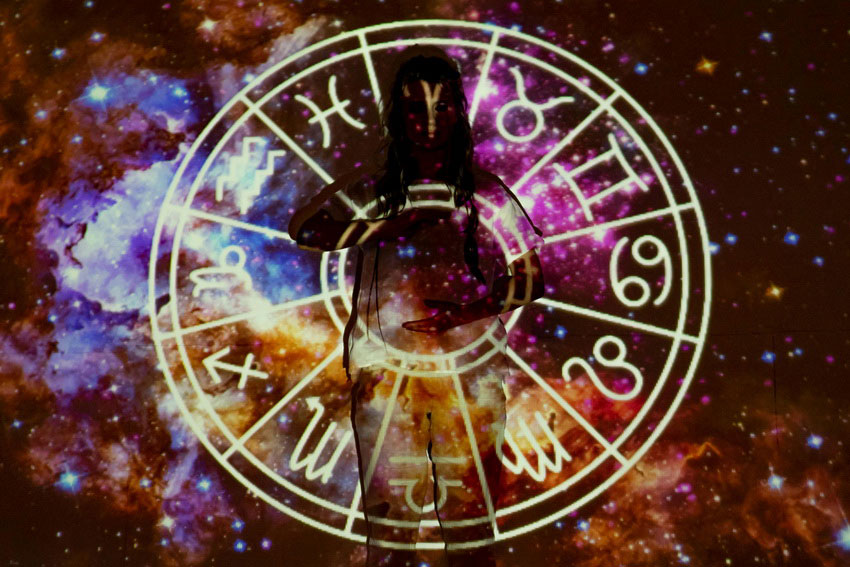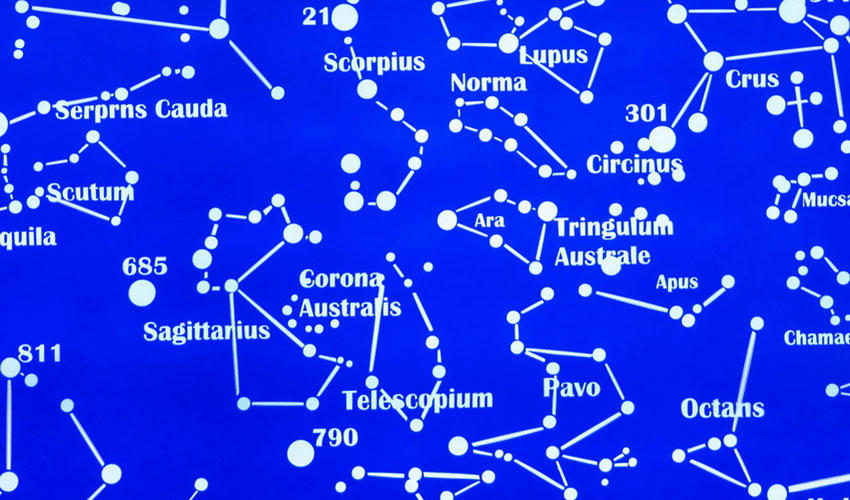How Astrology Shaped the Scientific Journey of Astronomy Along the Silk Roads
Before going to this article’s topic, I first would like to explain why I think Astrology is fascinating. It is because it serves as a profound mirror reflecting the complexities of human existence, weaving together the intricate tapestry of our personalities, relationships, and life journeys. I find myself captivated by the idea that the positions of celestial bodies at the moment of my birth could hold insights into my character and destiny; it’s as if the universe itself is communicating with me in a language imbued with symbolism and meaning. Delving into my astrological chart is like embarking on an introspective journey, revealing layers of my identity that I might overlook in the hustle and bustle of everyday life.
I appreciate how Astrology transcends mere fortune-telling, inviting me to explore the deeper narratives of my experiences and the dynamics between my sun, moon, and rising signs. The intricate relationships between the planets and their movements mirror the ebbs and flows in my own life, offering guidance and reflection during times of uncertainty. I also enjoy connecting with others over our shared signs, experiencing the camaraderie and the sense of belonging that comes from understanding how our unique energies intermingle. Ultimately, Astrology does not dictate my fate; rather, it empowers me to embrace the inherent mysteries of life, fostering a deeper connection to myself and the cosmos, which I find endlessly enchanting.

The Silk Roads, more than mere trade routes, were vibrant arteries of cultural exchange that profoundly shaped the development of civilisations across vast regions of the globe. Over centuries, these pathways fostered a dynamic interplay of diverse peoples and cultures, leading to the rich sharing of knowledge and the emergence of multifaceted fields of scientific inquiry that still resonate in today’s world. Disciplines as varied as medicine, mathematics, geography, cartography, and Astronomy owe much of their evolution to the interactions and exchanges facilitated by these historic routes.
Moreover, beyond the realms of established sciences, the Silk Roads also nurtured a host of academic pursuits that have since fallen out of the scientific canon but remain essential to our intellectual heritage. One notable example is alchemy. This ancient practice, often regarded as a precursor to modern chemistry, reflects the quest for understanding the natural world, illustrating the depth and breadth of inquiry inspired by the exchanges along these routes. Similarly, Astrology emerged as a profound exploration into the fabric of cosmic influence over human affairs, seeking to unveil meaning and predictive insights from the movements of celestial bodies.
The origins of Astrology trace back to humanity's earliest observations of the stars, with evidence of its practice dating as far back as the 3rd millennium BCE. For millennia, particularly until the 17th century, Astrology was regarded as a respectable academic discipline across much of Eurasia. It permeated political and cultural thought, as scholars, rulers, and the general public alike sought to understand their destinies through the lens of the celestial. Astrological principles informed various fields, enriching the practices of alchemy, meteorology, and traditional medicine, and revealing the interconnectedness of human existence and the cosmic order.
Thus, the legacy of the Silk Roads lies not only in the commodities traded but also in the profound intellectual exchanges that continues to shape our understanding of the world. Through these ancient pathways, diverse ideas merged, allowing disciplines like Astrology to flourish as vital links between the heavens and human experience, underscoring the roadways' longstanding impact on the evolution of scientific thought.

During the flourishing era of the Tang Dynasty (705 – 907 CE), the Silk Roads served as vital arteries of cultural exchange, facilitating the transfer of diverse astrological traditions into China. Among these was the sophisticated practice of horoscopy, the art of forecasting a person’s fate based on the celestial positions at the moment of their birth or the astrological significance of specific events. This method was seamlessly woven into the fabric of the pre-existing Chinese astrological system, which itself bore the rich influences of ideas originating from the Iranian Plateau.
Astrology during this period was not merely a practice of prediction; it was intertwined with the burgeoning fields of Astronomy and mathematics, acting as a conduit for the transmission of knowledge across civilisations. From the meticulously calculated movements of celestial bodies to the intricate mathematical frameworks that governed their observation, Astrology played a pivotal role in the dissemination of scientific thought, primarily sourcing its insights from the Indo-Iranian intellectual tradition.
The Western influence on Chinese horoscopy was especially pronounced, as many foundational texts from the Hellenistic world, including those of the renowned astrologer Dorotheus of Sidon, found their way into Chinese scholarship through the mediation of Indo-Iranian scholars along the winding paths of the Silk Roads. This interchange was not unilateral; Indian astrological frameworks also permeated into new territories across Central Asia, the Iranian Plateau, and China, often parallel to the spread of Buddhism, which became another significant thread in the intricate tapestry of cross-cultural exchange.
Moreover, the exploits of early Islamic astronomers and astrologers reflected this rich mosaic of influences, as they assimilated numerous Indian theories into their works, many of which were informed by Middle Persian texts. During a transformative period when direct translations from Greek and Indian scientific treatises into Arabic proliferated, the scholarly landscape expanded even further.

A pivotal figure in this intellectual lineage was the illustrious ninth-century astrologer Abu Ma’shar (787 – 886 CE) from Balkh, whose profound influence reverberated across cultures. In his seminal treatise, "Book of Thousands," Abu Ma’shar masterfully amalgamated Hindu, Sasanian, and Hellenistic astrological traditions, creating a compendium that would shape the future of astrological thought not just in his own region, but throughout the vast expanse of the Islamic world and beyond. Through the prism of horoscopy and its related sciences, the complex web of astrological practice during the Tang Dynasty exemplifies a vibrant exchange of ideas that transcended geographical and cultural boundaries, enriching the intellectual heritage of humanity.
In the rich and intellectually vibrant tapestry of Medieval Central Asia, Astrology emerged as a favoured field of inquiry, presenting itself in two distinct yet intertwined forms. On one hand, there was a version grounded in mathematical rigor and meticulous astronomical observations, an approach that sought to align celestial phenomena with earthly events through empirical study. On the other hand, a more mystical interpretation of astrology took root, one that relied heavily on magical elements and symbolic interpretations to forecast the future, often steeped in beliefs and traditions.
Amidst this burgeoning landscape of astrological thought, the illustrious polymath Al-Biruni, whose contributions spanned various fields, arose as a transformative figure in the late 10th and early 11th centuries CE. He was among the first to articulate a crucial distinction between Astrology and astronomy, a separation that would have profound implications for the understanding of these disciplines. To Al-Biruni, Astrology resembled more of an artistic practice, one deeply intertwined with cultural beliefs, rather than a rigorous scientific pursuit. His critique was sharp and insightful; he highlighted the frail mathematical foundations that often underpinned astrological claims and emphasised the necessity for a more robust epistemological framework.
Delving deeper into his analysis, Al-Biruni scrutinised the astrological doctrines from diverse cultures including those of Ancient Greece, the Indian subcontinent, the Iranian Plateau, and the broader Central Asian region. Through this comparative lens, he argued convincingly that what passed for astrological knowledge was often riddled with inconsistencies and lacked the empirical support that characterises true science. In doing so, he not only illuminated the limitations of Astrology but also carved a path for a more disciplined and mathematically informed understanding of the cosmos, thereby laying the groundwork for future astronomical inquiry. His work stands as a beacon of intellectual clarity, a reminder of the importance of distinguishing art from science in the pursuit of knowledge.
Though eventually dismissed as a legitimate science, astrology historically played a pivotal role in shaping the evolution of scientific thought along the Silk Roads, intricately woven into the fabric of what was known as ‘natural philosophy.’ This ancient belief in the powerful influence of celestial bodies propelled scholars across centuries to dedicate themselves to meticulous observations of the night sky, engaging with the stars and planets with an impressive level of detail and precision, all in the hopes of enhancing the reliability of their forecasts.
These passionate pursuits yielded a plethora of valuable, albeit unintended, advancements in the realm we now recognise as Astronomy. Take, for instance, the astrological calculations of the ancient Babylonians, which not only facilitated their interpretations of celestial events but also sparked groundbreaking developments in geometry. Similarly, the rigorous practice of observing and measuring the cosmos led to the innovation of sophisticated tools like the astrolabe. This remarkable handheld instrument became indispensable for astronomers during classical antiquity, the Islamic Golden Age, and the European Middle Ages, serving a variety of vital scientific functions.
Despite the divergent views regarding its scientific credibility, Astrology in both Ancient and Medieval eras was inseparably linked to astronomy. The interplay of these two disciplines fostered significant advancements, rooted in a rich tapestry of cross-cultural knowledge shared among regions interconnected by the Silk Roads. This dynamic exchange not only propelled scientific inquiry but also nurtured a deeper understanding of our universe, illustrating how the pursuit of meaning through Astrology inadvertently laid the groundwork for future astronomical accomplishments. In many ways, Astrology's legacy as a precursor to modern science underscores a fascinating chapter in humanity's quest for knowledge and comprehension of the cosmos.

Astrology & Astronomy - Understanding Two Complementary Disciplines
Astrology and Astronomy, though often intertwined and sometimes mistaken for one another, represent two distinct fields with unique methodologies, purposes, and historical contexts. In a world increasingly eager to understand everything from celestial phenomena to personal destiny, it is crucial to delineate the differences between these two areas of study.
Historical Context
To appreciate the distinction between Astrology and Astronomy, we must explore their historical roots. Astronomy is one of the oldest sciences, tracing its origins back to ancient civilizations. Early astronomers observed the movements of celestial bodies and developed sophisticated tools for navigation and timekeeping. Ancient cultures such as the Babylonians, Greeks, and Chinese contributed significantly to the development of astronomical thought, culminating in the heliocentric model proposed by Copernicus in the 16th century and the subsequent advances made by Galileo and Kepler. Astronomy has since evolved into a rigorous scientific discipline dedicated to the study of celestial objects, space phenomena, and the universe's fundamental properties.
Astrology, on the other hand, can also trace its lineage to ancient times, originating from similar observations of celestial events. While astronomers were focused on the scientific study of the cosmos, astrologers sought to interpret how these celestial movements influenced human affairs and terrestrial events. The earliest known astrological records date back to Babylon, around the second millennium BCE. Over time, Astrology became intertwined with various cultural and religious beliefs, leading to its development into a complex system of interpretation that linked heavenly bodies to personal traits and life events.
Methodology & Purpose
The most significant difference between Astrology and Astronomy lies in their methodologies and purposes. Astronomy is a hard science that relies on empirical data, experimentation, and observation. Astronomers utilise telescopes, satellites, and complex mathematical models to study the positions, motions, and properties of astronomical bodies. The work of astronomers has led to groundbreaking discoveries, such as the laws of planetary motion, the expansion of the universe, and the nature of black holes. The scientific method is central to Astronomy, emphasising scepticism, repeatability, and peer review as critical components of validating findings. Astrology, in contrast, functions more as a philosophical and interpretative system. Astrologers analyse the positions of celestial bodies such as planets and stars, at particular moments in time, usually at the time of a person's birth, to generate interpretations regarding personality traits, life events, and potential future outcomes. Astrology relies heavily on symbolism, myth, and tradition rather than empirical evidence. Despite its lack of scientific validation, Astrology has remained influential, providing many people with guidance, comfort, and insight into their lives.
Scientific Basis vs. Esoteric Beliefs
The scientific community widely critiques Astrology for its lack of empirical foundation and repeatable results. Major scientific organisations, including the American Astronomical Society, regard astrology as a pseudoscience, asserting that its claims are not based on rigorous scientific investigation. A striking finding from studies on Astrology is that people born under the same astrological sign often exhibit a wide variety of traits and life paths, undermining the idea that zodiac signs determine fate. Astrology's esoteric appeal lies in its mythology and belief system rather than scientific backing. People often find solace in astrological readings, viewing them as tools for self-reflection and personal growth. Aspects of Astrology, such as horoscopes and natal charts, provide people with narratives that can help them navigate the complexities of human experience, despite the lack of scientific support.

Cultural Impact & Popularity
Both Astrology and Astronomy maintain significant cultural importance, albeit in different ways. Astronomy has captured the imagination of humanity, inspiring countless works of art, literature, and popular culture. The exploration of space, from the Apollo moon landings to current missions to Mars, ignites a sense of wonder about our universe. Public interest in Astronomy has surged, with stargazing events, planetarium shows, and educational programs fostering an appreciation for scientific inquiry and the cosmos. Astrology, conversely, has enjoyed a resurgence in popularity, particularly in the digital age, where social media platforms help disseminate astrological content quickly. Many people turn to Astrology for guidance in a fast-paced and uncertain world, leading to a culture of personal branding based on astrological signs. Astrology's accessibility, often reduced to a daily horoscope or personality traits described in amusing memes, resonates with many seeking personal connection and meaning.
Conclusion - Two Sides of the Celestial Coin
In summary, while Astrology and Astronomy share common historical roots and both grapple with humanity's fascination with the universe, they diverge sharply in methodology, purpose, and cultural significance. Astronomy stands as a pillar of scientific rigour, dedicated to uncovering the mysteries of the universe through objective observation and analysis. Conversely, Astrology thrives in the realm of personal exploration and belief, offering insights and narratives that resonate on a deeply personal level, despite lacking empirical validation. Understanding the differences between these two fields equips individuals to navigate their cosmic curiosities wisely, appreciating both the awe-inspiring beauty of the universe and the rich tapestry of human interpretation that Astrology offers. Both disciplines have their place in the human experience, reflecting our quest to understand our existence and our connection to the vast cosmos above.
“I'm sure the universe is full of intelligent life. It's just been too intelligent to come here.” - Arthur C. Clarke






















